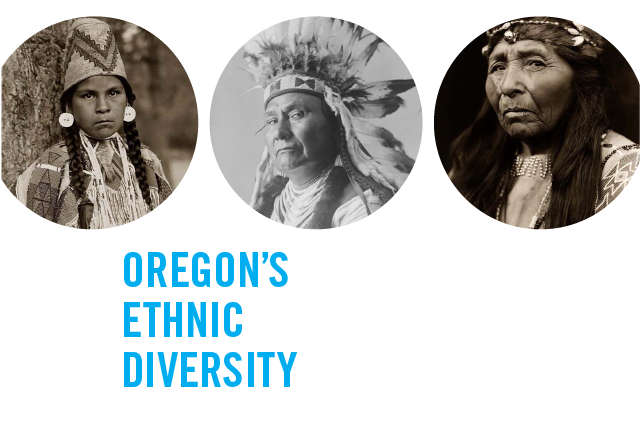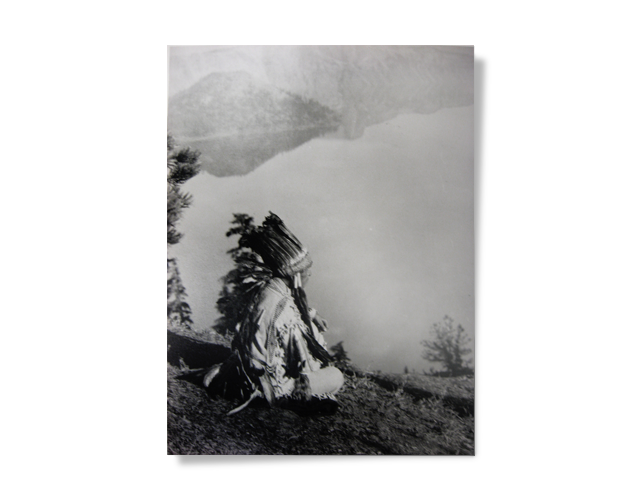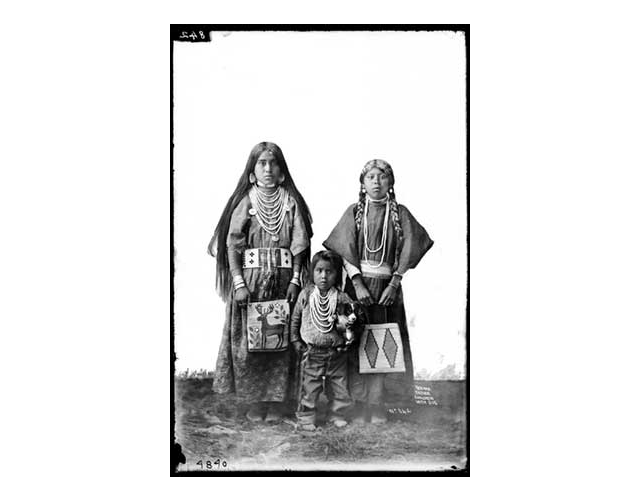What Oregon is

The Oregon Territory used to border The Louisiana Territory. That is nuts.
Often one of the biggest complaints about Oregon (Portland in particular) is that it is predominantly a white population. Compared to other cities in the United States, Oregon’s ethnic diversity leaves a alot to be desired, especially for people coming from places like the East Coast. It wasn’t always this way though. Prior to European colonization of this area, Oregon was one of the richest cultural grounds in North America.
Historians have credited peoples of the Pacific Northwest with being the first wealthy North Americans. Wealth here is determined in amount of work needed to produce stable and healthy life. In two days of ‘work’ in aboriginal NW America one could produce enough food for a week. Often hunting was only done when a change of diet was wanted.
One image struck me in particular, the one that prompted this post. A Klamath man staring into the remains of Mount Mazama, or Crater Lake.

This image was taken around the turn of the century, he sits near where a lodge and visitor center reside toady. Having vacationed here most of my life I know that exact spot on the rim. Looking out past Wizard Island, probably towards a small outcrop called Ghost Ship. Is he feeling something similar to what I feel when I look at this magnificent geologic wonder? Did he pretend, like I do, that the water is the sky and the rim is a great loop in the land cradling a hole in the earth (the water is a near-perfect mirror to the sky and rim)?
Part of the reason this region was so wealthy was due to a great thunder that could be heard from miles away, originating on the Columbia River.
Near the present-day town of The Dalles, the mighty Columbia River squeezed through a tight channel and cascaded over several falls resulting in a great boiling of water and energy. Here, fisherman would reap the bounty of one of the greatest salmon runs in the world, at Celilo Falls. Once a year the wealthy became opulent. The fishing grounds were so legendary that plains tribes from across the rocky mountains and coastal tribes from southern Alaska would travel and risk their lives to trade at Celilo.
In the 10,000 year human history of Oregon, Celilo Falls is described as the first Wall-Street on Earth, the first Emporium of North America. Language, culture, ideas, goods, news, and technologies were exchanged in a marketplace by the water, on both sides of the river. The absolute value of this one spot in North America cannot be determined. It was the American silk road and contributed to the diversity of peoples that called Oregon home. Say hello to the first Oregonians:

All of these images are from what is present-day Oregon, a term whose origin is itself uncertain. There are several conflicting reports of how Oregon got it’s name. What is certain is that it grouped together people that were culturally distinct from one another with completely different lifestyles based on their geographic origin. On the lower right is a Paiute woman sitting on the ground in extreme SE Oregon, resplendent in a rabbit-fur cape. Her lifestyle would be completely foreign to a coastal Chinook or Tillamook woman, but both would likely have met at Celilo Falls in their lifetime. Having traded camas bulbs or furs for elegant seashell earrings, perhaps they became friends? Perhaps the woman in the rabbit cape took back her prized seashells to SE Oregon and kept them in her home, a reminder of her great trip to the the big river.
If you have a free day as the days start to get warmer, you can drive to Celilo Falls and just 20 minutes further east up river you will find Maryhill Museum. Their exhibition, which opens March 15, called “Images and Art of the Mid-Columbia Indians” will leave your head spinning.

This image, which is in the collection, immediately captured my attention. These are Klickitat children and their dog (in middle) photographed in 1900 near the Columbia River. What struck me though is the bead bag on the left. The deer with branches around it. Why is it so familiar? Probably because, thanks to Mr. Jason Sturgill, I have it tattoed on my shoulder. This very bag the girl is holding is in the permanent collection at the Portland Art Museum, which was then seen by painter Evan B Harris, who sketched it and I, seeing it among 45 other options, chose it. And now, 6 months later I know why it is on my shoulder forever. Perhaps this girl chose it for me (See me getting inked at 2:58 + the Art is Forever tattoo project).
Dropping mad knowledge, great article.
It’s an remarkable article in support of all the web viewers; they will take benefit from it I am sure.